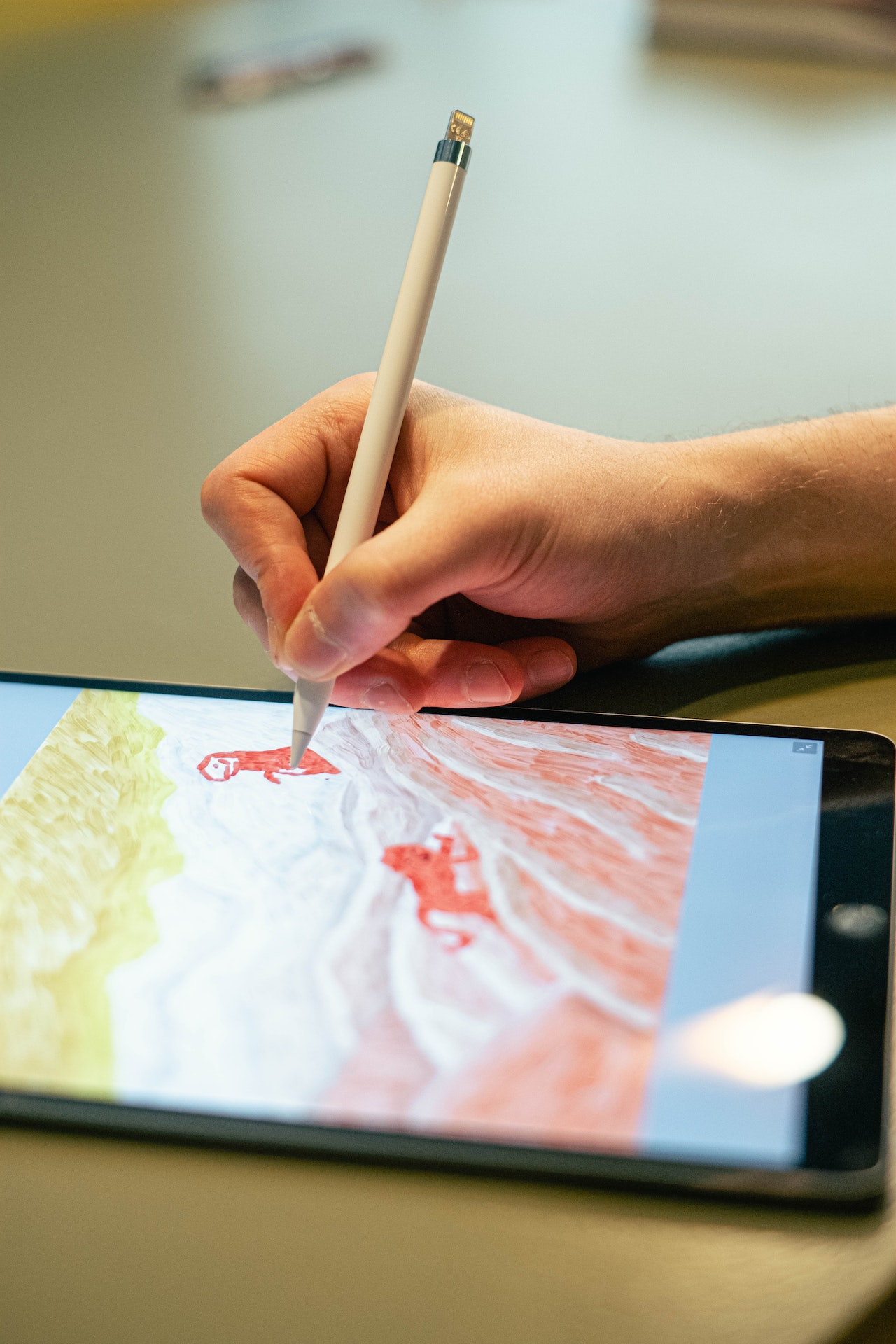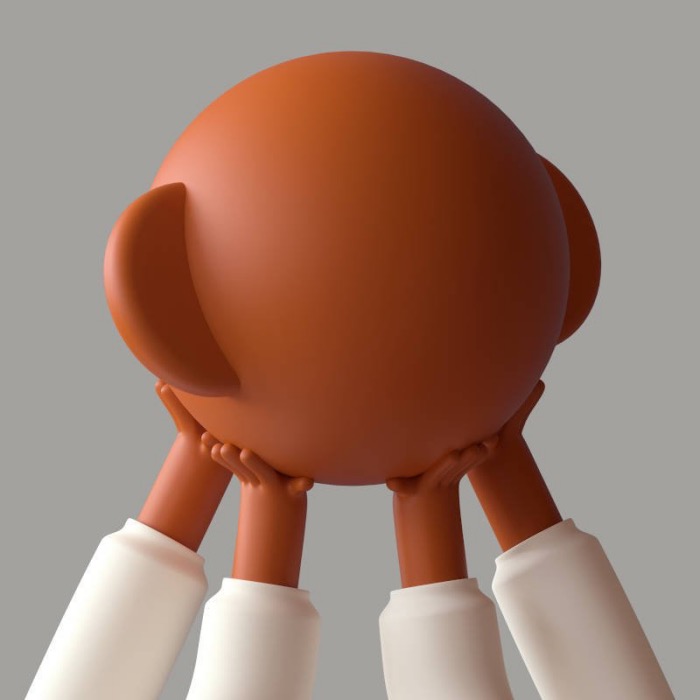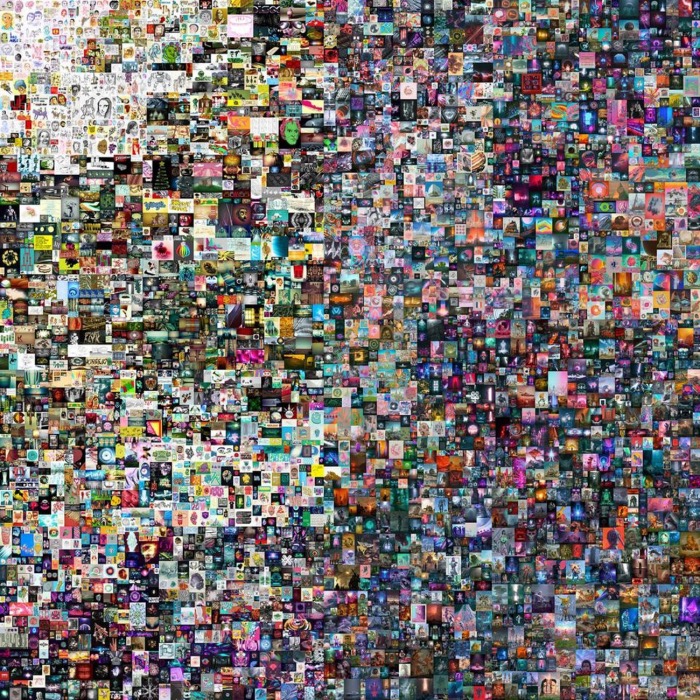
Have you ever stopped to reflect on the artistic phenomenon that is changing the face of creativity in our century? We live in a time when technological innovation permeates every aspect of our daily lives and how could art, the eternal expression of the human soul, remain indifferent to this revolution? Yes, I am referring to digital art, that new expressive universe that embodies the intersection of creative genius and the technological avant-garde.
This art sector is becoming more and more relevant, influencing not only the creative aspect of the artwork, but also our way of enjoying art and collecting.
From the birth of computers to the frenetic NFT market, digital art is an ever-evolving frontier, and today I want to guide you through its intricate paths.
Digital art: what it is, artists, techniques and market

Cesar Pelizer “Holding it Together” – 3d digital art
In the vibrant and never static contemporary art scene, terms such as ‘digital art‘ and ‘NFT’ have now entered our cultural vocabulary. These are terms and concepts that are deeply connected to our time and refer to a revolutionary form of art. An expressive technique that has combined creativity and technology.
WHAT IS DIGITAL ART?
Digital art can be defined as that wide range of creative expressions that come to life from the synergy between artistic flair and technological innovation. More precisely, it is the artistic manifestation that uses digital tools and software as the main or even exclusive means of creation and, sometimes, exhibition.
Contrary to what the terms might suggest, digital art is not exclusive to our century. Surprisingly, its roots lie further back in time, in the 1950s and 1970s to be more precise. In those years, in fact, the advent of early computer technology provided artists with a new set of tools and visual languages, ushering in an era of experimentation that laid the foundations for what we know today as digital art.
Also known as ‘computer art’, ‘multimedia art’ or more broadly as ‘new media art’, digital art can be developed in many ways. This type of art not only reinterprets classical techniques such as painting and sculpture through digital means, but also opens the door to new art forms:
- Net Art: artistic creations using the Internet as a medium or as a final destination.
- Digital Installations: sequences of images projected through computer systems.
- Digital Art 3D: three-dimensional graphics created from complex geometric shapes and NURBS (Non-Uniform Rational Basis-Splines), often used for visual special effects.
- Virtual Reality: environments simulated through digital reconstruction technologies.
- Desktop Publishing: related to graphic design, but with an artistic resonance.
Sound Art and Electronic Music: computer technology applied to sound creation.
PIONEERS AND PROTAGONISTS: THE VISIONARY MINDS BEHIND DIGITAL ART
If you have ever wondered about the visionary geniuses who laid the foundations for the rise of digital art, we have to go back to the 1950s. At that time, two particularly extraordinary figures emerged from the mists of history: German-born Manfred Frank and American Ben Laposky. Both were programmers and mathematicians, but characterised by a singular and rare artistic sensibility that allowed them to see beyond code and algorithms.
These two pioneers applied their profound mathematical and technological knowledge to create innovative visual expressions, using tools such as the oscilloscope to generate shapes and patterns that had never before been seen.
At a time when the idea of using technology as an artistic medium was almost unimaginable to many, Frank and Laposky dared to challenge the traditional boundaries of art.
However, it was from the 1980s onwards that digital art started to develop as a mass phenomenon, parallel to the entry of computers into people’s homes. This period marked a crucial turning point, making digital technologies accessible not only to research centres or large companies, but also to independent artists and creative people of all kinds. The potential of the computer as a tool for artistic creation was quickly recognised and exploited, giving rise to a new era of experimentation and artistic expression that continues to evolve today.
A CHANGING ECONOMIC LANDSCAPE: FROM PIXELS TO NFT
The economic issue has always been at the centre of discussions when it comes to art, and digital art is no exception. However, crypto art and blockchain have revolutionised the way we value and, more importantly, market digital art.
These technologies have introduced the concept of a digital ‘token’, a kind of encrypted certificate of authenticity that gives each work of art a unique uniqueness. This has amplified not only the intrinsic value of the works, but also their market potential.
While previously a digital artist could earn money through licences, direct sales or commissions, the advent of blockchain has added a new dimension to the monetisation of art. It is now possible to accurately track the provenance and ownership of a work, creating a new level of trust and thus potentially increasing its economic value.
To speak of a standard income for a digital artist would be reductive, given the wide range of factors influencing the value of a work. However, it is undeniable that NFT and crypto art have created economic opportunities that were previously unthinkable. Works that are ‘tokenized’ on blockchain have in some cases reached and exceeded the $100,000 mark, with some even selling for millions in online auctions.
In a market where traditional art has often seen the concentration of wealth and recognition in the hands of a few, blockchain and crypto art are democratising opportunities, enabling even emerging artists to earn significant sums and achieve global visibility. So, what we are experiencing is a historical moment in which the economic rules of art itself are in the midst of metamorphosis, and everything seems to indicate that this evolution is only just beginning.
To learn more, I recommend you read the post in which I explain what NFT art is.
LEADING ARTISTS IN THE FIELD OF DIGITAL ART
One cannot talk about digital art without mentioning the artists who have marked and continue to influence this fascinating field.
After pioneers such as the German Manfred Frank and the American Ben Laposky, who laid the foundations for this art form in the 1950s, the field has grown exponentially.
In the 1990s and 2000s, artists such as Jenny Holzer and Rafael Lozano-Hemmer used digital media to explore new ways of interaction and public discourse. Holzer, for example, is known for her ‘projection’ projects that use architectural surfaces as a canvas for her textual works.
In the era of blockchain and NFTs (Non-Fungible Tokens), artists such as Beeple (real name Mike Winkelmann) and Pak have become celebrities in the digital art world.
Beeple made headlines when his work ‘Everydays: The First 5000 Days’ sold for an astronomical $69 million through a high-profile auction house. Pak, at the same time, has gained recognition for the elusiveness and mystery surrounding his identity, as well as for his works that often challenge traditional conventions of art and ownership.
Each artist contributes uniquely to the evolution of digital art, pushing technological, conceptual and, now, economic boundaries. Whether pioneers of the early hours or innovators of the modern era, these artists represent the variety and depth of an ever-expanding and reformulating artistic field.

Beeple, Everydays-The First 5000 Days
Digital art is more than just a trend; it is a new horizon of possibilities and creativity. I invite you to immerse yourself in this fascinating world and explore the many facets it offers. If art is a mirror of the times, digital art is its most contemporary reflection.


Vorrei imparare